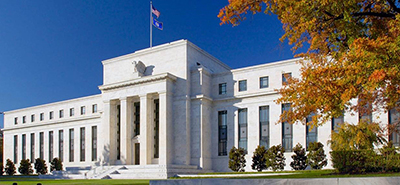
Fed Raises Rates; Is That It?

The Federal Open Market Committee raised the federal funds rate by another 25 basis points last week to its highest level since July 2007. And while it hinted this might be the final increase for a while, it left open the door for more action should economic conditions warrant.
“The Committee’s assessments will take into account a wide range of information, including readings on labor market conditions, inflation pressures and inflation expectations, and financial and international developments,” the FOMC said in a statement following its two-day policy meeting.
The federal funds rate now stands at 5.00-5.25 percent; it marks the 10th time the Fed has increased rates since March 2022.
“Neither a fragile banking sector nor a slowing job market prevented the Federal Reserve from increasing its short-term rate target again [Wednesday], in line with market expectations,” said Mike Fratantoni, Chief Economist with the Mortgage Bankers Association. “However, with this increase, we expect this is the peak rate for this cycle, and potential homebuyers and their mortgage lenders may be breathing a sigh of relief. We continue to expect that mortgage rates will drift down over the course of the year as the economy slows, as we move closer to the Fed lowering rates beginning in 2024, and as financial market volatility finally begins to settle down.”
Fratantoni noted although recent speeches by Fed officials had indicated an increasing amount of disagreement regarding the next steps for policy, this was another unanimous vote. “We expect that the Fed will be ‘data dependent,’ and certainly would react to any renewed increase in inflation, but today’s statement is consistent with a plan to pause rates at this level. Inflation is likely to trend down over the course of the year, particularly as weakness in the rental market begins to be reflected in the inflation numbers,” he said.
In the near term, Fratantoni said, tighter credit conditions will slow the pace of economic activity. “The housing sector is already operating under tight credit, so we don’t expect this headwind to outweigh the benefits from somewhat lower mortgage rates,” he said. “The housing market is likely pulling the economy out of this slowdown, as it typically does. “While lower mortgage rates will help with affordability, they won’t solve for the lack of inventory on the market, particularly of existing homes. This lack of supply will continue to be the primary constraint on home sales through 2023.”
“The Committee does not appear to be pre-committing to another rate hike on June 14,” said Jay Bryson, Chief Economist with Wells Fargo Economics, Charlotte, N.C. “In its March 22 statement, the FOMC said that it ‘anticipates that some additional policy firming may be appropriate.’ Today’s statement dropped the reference to ‘anticipates.’ Rather, the statement said ‘in determining the extent to which additional policy firming may be appropriate’…The Committee could indeed hike rates by 25 bps on June 14, but that decision will depend crucially on incoming data over the next six weeks. In our view, the bar to a rate hike on June 14 is higher than it has been at past meetings since March 2022.”
The full FOMC statement appears below:
“Economic activity expanded at a modest pace in the first quarter. Job gains have been robust in recent months, and the unemployment rate has remained low. Inflation remains elevated.
“The U.S. banking system is sound and resilient. Tighter credit conditions for households and businesses are likely to weigh on economic activity, hiring, and inflation. The extent of these effects remains uncertain. The Committee remains highly attentive to inflation risks.
“The Committee seeks to achieve maximum employment and inflation at the rate of 2 percent over the longer run. In support of these goals, the Committee decided to raise the target range for the federal funds rate to 5 to 5-1/4 percent. The Committee will closely monitor incoming information and assess the implications for monetary policy. In determining the extent to which additional policy firming may be appropriate to return inflation to 2 percent over time, the Committee will take into account the cumulative tightening of monetary policy, the lags with which monetary policy affects economic activity and inflation, and economic and financial developments. In addition, the Committee will continue reducing its holdings of Treasury securities and agency debt and agency mortgage-backed securities, as described in its previously announced plans. The Committee is strongly committed to returning inflation to its 2 percent objective.
“In assessing the appropriate stance of monetary policy, the Committee will continue to monitor the implications of incoming information for the economic outlook. The Committee would be prepared to adjust the stance of monetary policy as appropriate if risks emerge that could impede the attainment of the Committee’s goals. The Committee’s assessments will take into account a wide range of information, including readings on labor market conditions, inflation pressures and inflation expectations, and financial and international developments.
“Voting for the monetary policy action were Jerome H. Powell, Chair; John C. Williams, Vice Chair; Michael S. Barr; Michelle W. Bowman; Lisa D. Cook; Austan D. Goolsbee; Patrick Harker; Philip N. Jefferson; Neel Kashkari; Lorie K. Logan; and Christopher J. Waller.”
